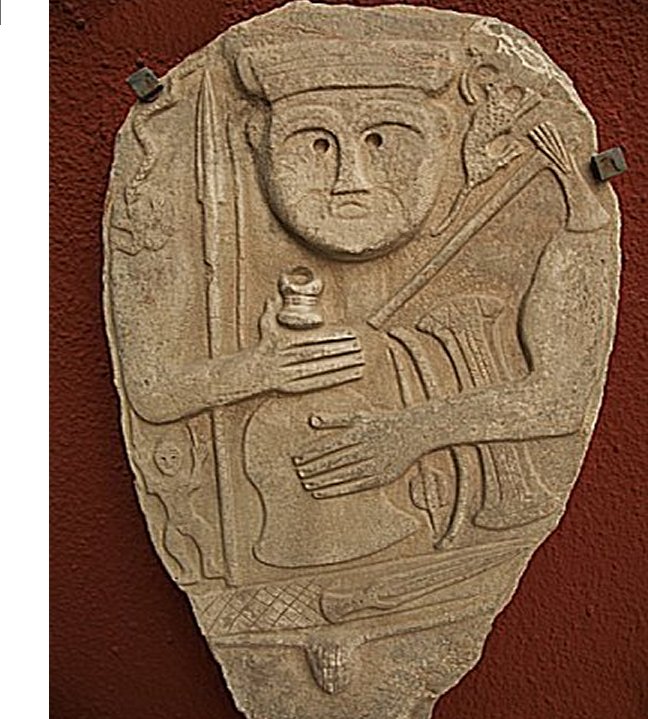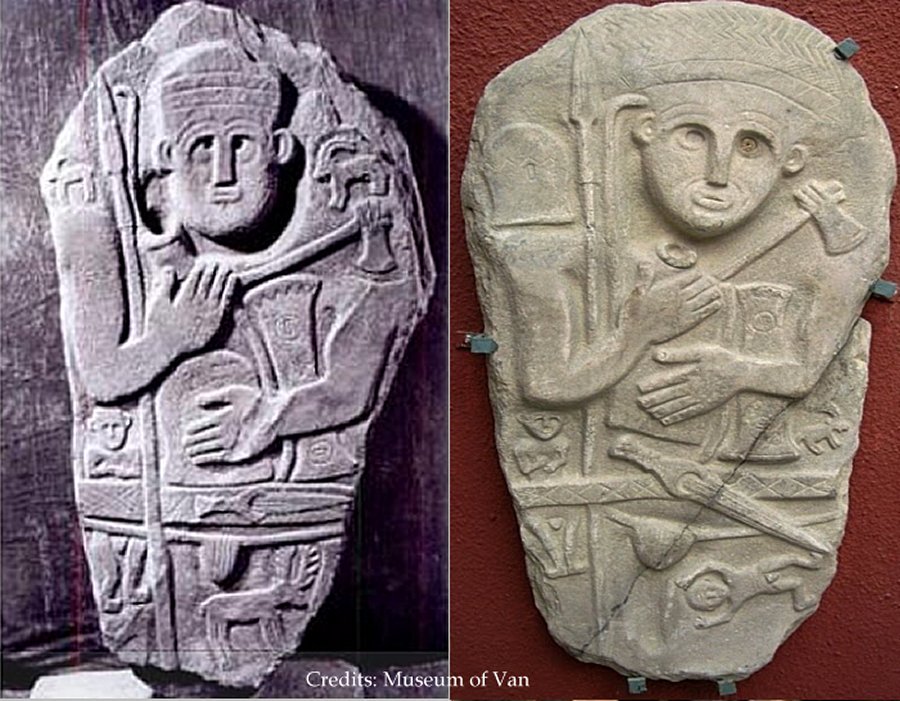Mysterious Hakkari Stelae: Were They Carved By Inhabitants Of Ancient Kingdom Of Hubushkia?
A. Sutherland - AncientPages.com - In 1998, a resident made an intriguing discovery of thirteen stone stelae in Hakkari.
Hakkâri (also called Julemerg) is a city and capital of the Hakkâri province in the Turkish region of Kurdistan.
Hakkari Stelae. Credits: Museum of Van
The town is located roughly 200 km southeast of Van, another Kurdish city, in the southeasternmost corner of Turkey, close to the borders with Syria and Iraqi Kurdistan.
Throughout history, Hakkari has been ruled by various civilizations like the Urartians, Medes, Persians, Romans, Byzantines, Seljuks, and many more.
It has been suggested that this particular region of Eastern Anatolia was once occupied by an Iron Age Kingdom of Hubushkia, which was centered on the headwaters of the Great Zap River that goes through the Hakkari Province in Eastern Anatolia, Turkey.
However, the exact location of this independent kingdom is unknown.
The kingdom is mentioned in the Assyrian "Annals of Assur-Nasir-Pal," which most probably reigned from 883 to 858 BC:
"...While I was staying in the land of Kirruri, the awe-inspiring splendor of Assur, my lord, overwhelmed the men of the lands of Gilzani and Hubushkia; horses, silver, gold, lead, copper, and vessels of copper they brought to me as their tribute..."
The Assyrian expeditions crossed the territory of Hubushkia many times and were under the Urartian and Assyrian influence. Disputed by Assyria and the kingdom of Urartu, Hubushkia eventually lost its independence.
What Is Known About Hubushkia
For the first time, an ancient city and kingdom of Hubushkia is mentioned in Assyrian sources dated to the 1st millennium BC. Hubushkia was located south or west of Lake Urmia (modern-day Kurdistan), according to annals of the Assyrian king Tukulti-Ninurta II (890-884 BC), describing his war expedition to the Land of Nairi, on the border of Assyria and Urartu.
Later, the kingdom appeared among the lands conquered by Ashurnasirpal II (883-859 BCE), the son and successor of Tukulti-Ninurta II, during a military campaign conducted in the first year of his reign. Salmanasar III (858-824 BC), son and successor of Ashurnasirpal II, also led his first war expedition towards Nairi.
His annals say that during this expedition he was supposed to destroy the city of Hubushkia with fire and burned a hundred other cities in its environs. 1
Then, after defeating Kakia - the King of Nairi - he reached the "Sea of Nairi" (most likely Lake Urmia), where he ordered to erect an inscribed stele.
The fascinating cut stone figures are hewn in high relief and vary in size from 70 cm to 3.1 m.
In the third year of his reign, Salmanasar III again entered the territory of Hubushka, where he stormed the fortress of Shilaya, thus, Hubushkia again became the target of this king's war expedition in 844 BC. in 829 and 828 BC.
Several military expeditions against the Land of Hubushkia were conducted on behalf of King Dayan-Ashur, commander-in-chief of the Assyrian army (turtan). In both cases, these expeditions ended with a tribute to the Assyrians by Datana, King of Hubushkia.
Adad-nirari III (810-783 BC), the grandson of Salmanasar III, conducted four campaigns of war against the Land of Hubushkia, in 801, 791, 785 and 784 BC. in 715 BC. Janzu, King of Hubushkia, sent a tribute to Sargon II (722-705 BC) during his expedition against Urartu.
The artifacts, which are now on display in Van Museum, were discovered accidentally by a resident of the southeastern Turkish town of Hakkari at the base of a steep crag crowned by an Ottoman castle.
Were these stone stelae erected to venerate the dead? They could be tombstones depicting warriors or other important people that lived in the Kingdom of Hubushkia.
They portray human figures in cluttered compositions amidst an array of motifs and objects – weapons, other human figures, reptiles, deer, snakes, and other wild animals.
The figures are primarily men (only two stelae contain female figures without arms), are shown front-on, and stare emotionlessly with round penetrating eyes at the observer. They have long noses and small, closed mouths, and around each of their waists is a belt from which hangs a dagger. Most of these enigmatic figures wear a cap and hold an object tightly in their hands.
Researchers believe that these anonymous stelae were carved by ancient people who inhabited Hubushkia. These stelae had never been previously discovered in Eastern Anatolia and dated back to the fifteenth century BC.
Written by – A. Sutherland - AncientPages.com Senior Staff Writer
Updated on September 30, 2022
Copyright © AncientPages.com All rights reserved. This material may not be published, broadcast, rewritten or redistributed in whole or part without the express written permission of AncientPages.com
Expand for referencesReferences:
Sagona,Zimansky, Ancient Turkey
Shigeo Yamada, The Construction of the Assyrian Empire
More From Ancient Pages
-
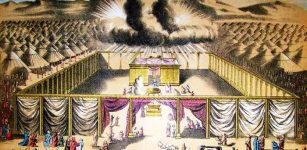 Ten Ancient Jugs And Shiloh May Reveal The Location Of The Biblical Tabernacle
Artifacts | Feb 6, 2019
Ten Ancient Jugs And Shiloh May Reveal The Location Of The Biblical Tabernacle
Artifacts | Feb 6, 2019 -
 Before Ragnarok: Horrifying Fimbulwinter In Norse Mythology Was Based On Real Events
Featured Stories | Nov 1, 2016
Before Ragnarok: Horrifying Fimbulwinter In Norse Mythology Was Based On Real Events
Featured Stories | Nov 1, 2016 -
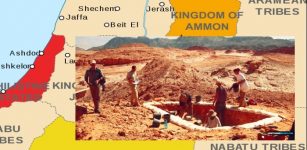 Evidence Of Biblical Kingdom Of Edom In Arava Desert – Discovered
Archaeology | Sep 23, 2019
Evidence Of Biblical Kingdom Of Edom In Arava Desert – Discovered
Archaeology | Sep 23, 2019 -
 Mysterious World Of Ancient Dwarves
Featured Stories | Mar 28, 2015
Mysterious World Of Ancient Dwarves
Featured Stories | Mar 28, 2015 -
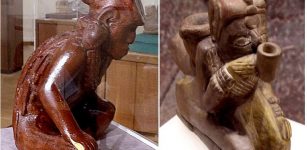 Unsolved Prehistoric Enigma Of Sophisticated Spiro People And Their Mysterious Mounds
Civilizations | Oct 25, 2018
Unsolved Prehistoric Enigma Of Sophisticated Spiro People And Their Mysterious Mounds
Civilizations | Oct 25, 2018 -
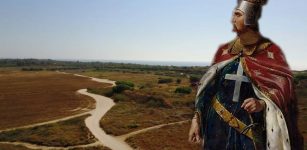 Battle Of Arsuf – Site Where King Lionheart And The Crusaders Defeated Saladin – Found
Archaeology | Aug 1, 2020
Battle Of Arsuf – Site Where King Lionheart And The Crusaders Defeated Saladin – Found
Archaeology | Aug 1, 2020 -
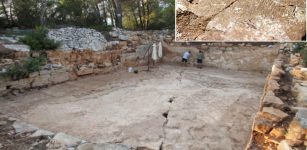 Excavations Of 2,500-Year-Old Water Cistern In Croatian Village Lumbarda – Completed
Archaeology | Oct 1, 2020
Excavations Of 2,500-Year-Old Water Cistern In Croatian Village Lumbarda – Completed
Archaeology | Oct 1, 2020 -
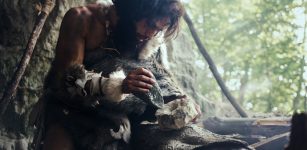 Startling Evidence Modern Humans Lived In The Mandrin Cave 56,800 Years Ago Where They Met The Neanderthals
Archaeology | Mar 12, 2022
Startling Evidence Modern Humans Lived In The Mandrin Cave 56,800 Years Ago Where They Met The Neanderthals
Archaeology | Mar 12, 2022 -
 The Perplexing Story Of The Seven Continents And The Seven Mysterious Races – Can The Past Foretell The Future? – Part 2
Featured Stories | May 15, 2022
The Perplexing Story Of The Seven Continents And The Seven Mysterious Races – Can The Past Foretell The Future? – Part 2
Featured Stories | May 15, 2022 -
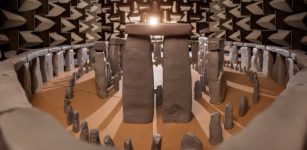 Ancient Sound Of Stones – Acoustics At Stonehenge Tested By Scientists
Ancient Technology | Aug 29, 2020
Ancient Sound Of Stones – Acoustics At Stonehenge Tested By Scientists
Ancient Technology | Aug 29, 2020 -
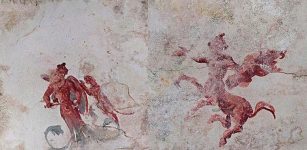 Sphinx Room Discovered At Emperor Nero’s Famed Domus Aurea (Golden House)
Archaeology | May 9, 2019
Sphinx Room Discovered At Emperor Nero’s Famed Domus Aurea (Golden House)
Archaeology | May 9, 2019 -
 Giant Meteorite Impacts Created The Continents – Evidence Found
Human Beginnings | Aug 12, 2022
Giant Meteorite Impacts Created The Continents – Evidence Found
Human Beginnings | Aug 12, 2022 -
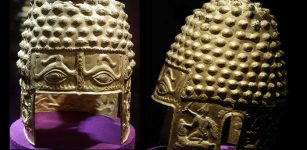 Ancient Dacian Gold Helmet With Piercing Evil Eyes
Artifacts | Jan 4, 2019
Ancient Dacian Gold Helmet With Piercing Evil Eyes
Artifacts | Jan 4, 2019 -
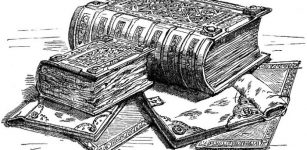 ‘The Domesday Book’ Of William I The Conqueror: Detailed Register Of ‘Who Owned What’ In England
Ancient History Facts | Jan 11, 2017
‘The Domesday Book’ Of William I The Conqueror: Detailed Register Of ‘Who Owned What’ In England
Ancient History Facts | Jan 11, 2017 -
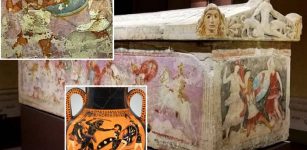 Sarcophagus Of The Amazons: Etruscan Coffin With Paintings Of Dynamic Fighting Scenes Of Greeks With Amazons
Featured Stories | Oct 18, 2022
Sarcophagus Of The Amazons: Etruscan Coffin With Paintings Of Dynamic Fighting Scenes Of Greeks With Amazons
Featured Stories | Oct 18, 2022 -
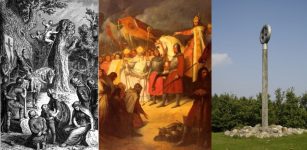 Irminsul – Mysterious Sacred Symbol Of The Saxons – Is It Linked To Yggdrasil And God Odin?
Ancient Symbols | Feb 11, 2019
Irminsul – Mysterious Sacred Symbol Of The Saxons – Is It Linked To Yggdrasil And God Odin?
Ancient Symbols | Feb 11, 2019 -
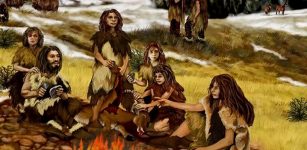 Disappearance Of Neanderthals: Were Inbreeding And Demographic Shifts Responsible?
Archaeology | Nov 28, 2019
Disappearance Of Neanderthals: Were Inbreeding And Demographic Shifts Responsible?
Archaeology | Nov 28, 2019 -
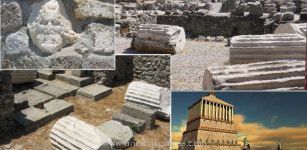 Halicarnassus’ Monumental Tomb Built With Shining Stones Belonged To Carian Ruler Mausolus
Featured Stories | Jul 20, 2016
Halicarnassus’ Monumental Tomb Built With Shining Stones Belonged To Carian Ruler Mausolus
Featured Stories | Jul 20, 2016 -
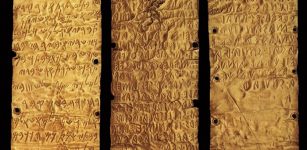 Pyrgi Gold Tablets: A Rare Ancient Bilingual Treasure
Artifacts | Nov 23, 2018
Pyrgi Gold Tablets: A Rare Ancient Bilingual Treasure
Artifacts | Nov 23, 2018 -
 Wonderful Long-Lived Nymphs In Greek And Roman Mythologies
Featured Stories | Mar 29, 2024
Wonderful Long-Lived Nymphs In Greek And Roman Mythologies
Featured Stories | Mar 29, 2024

